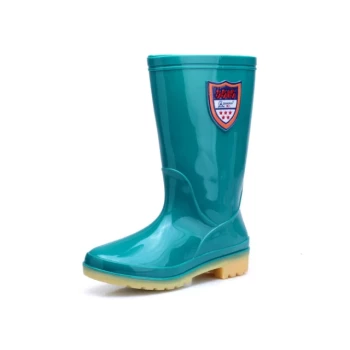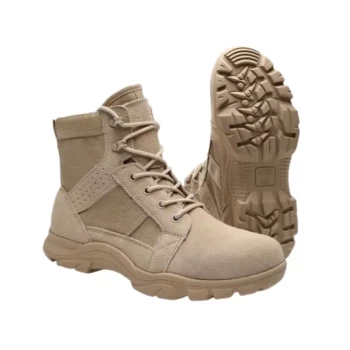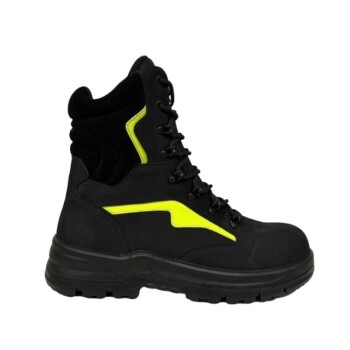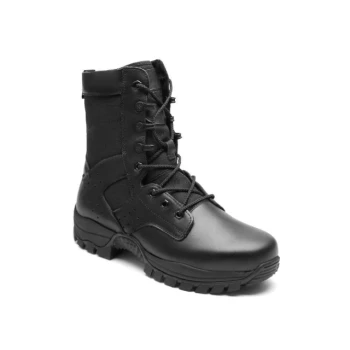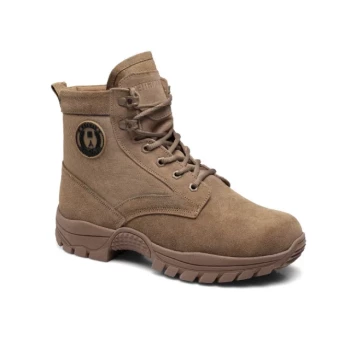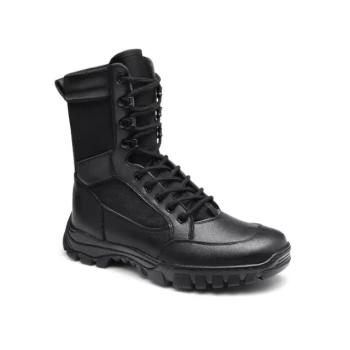Winter riding boots are specifically designed with three critical features: comprehensive waterproofing, thin, effective insulation, and high-traction, stirrup-safe soles. This unique combination is engineered to keep a rider's feet warm and dry in harsh weather without sacrificing the essential leg contact and control required for safe riding.
The core challenge of winter riding is balancing protection from the elements with the functional needs of an equestrian. A standard riding boot offers no warmth, while a traditional snow boot is dangerously bulky. Winter riding boots are the specialized solution that bridges this gap.
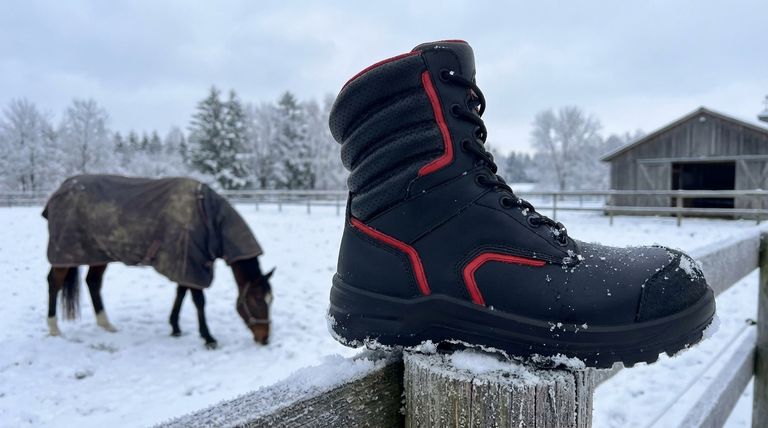
The Anatomy of a Winter Riding Boot
Winter riding boots are not simply regular boots with lining. Every component is chosen to solve a specific problem faced by riders in cold, wet, and icy conditions.
Essential Waterproofing
A boot's primary defense against cold is keeping the foot dry. Winter riding boots use waterproof membranes and treated materials to create a barrier against snow, slush, and rain encountered both in the saddle and around the barn.
Specialized, Low-Bulk Insulation
This is the feature that most distinguishes a winter riding boot from a standard snow boot. The insulation is intentionally thin and efficient, providing warmth without adding excessive bulk that would interfere with the rider's feel and communication through their leg.
High-Traction, Rider-Safe Soles
The outsole is designed for a dual purpose. It features deep treads or multidirectional lugs made from rubber to provide a secure grip on icy or snowy ground. However, the sole's overall profile remains slim enough to fit safely in a stirrup without the risk of getting stuck.
Robust Construction
These boots are built to be hard-wearing. The materials used are selected to withstand the rigors of barn chores, mud, and cold temperatures without cracking or failing, ensuring they last through the season.
How They Differ From Standard Boots
Understanding the alternatives clarifies why specialized winter boots are necessary for serious riders.
Winter Riding Boots vs. Standard Riding Boots
A standard paddock or tall boot is built for contact and fit, offering virtually no insulation or waterproofing. They provide poor protection against cold and will quickly become soaked and damaged in wet winter conditions.
Winter Riding Boots vs. General Winter Boots
A typical snow or hiking boot is far too bulky for riding. The thick insulation prevents proper leg contact, and the wide, heavy-lugged sole is a significant safety hazard as it can easily become wedged in a stirrup.
Modern Conveniences
Like many modern standard riding boots, winter versions often include zippers. These are typically located on the front of short (paddock) boots or down the back of tall boots, making them much easier to put on and take off, especially over thicker winter breeches or socks.
Understanding the Trade-offs
While essential for cold weather, winter riding boots do involve some compromises compared to their fair-weather counterparts.
Warmth vs. "Feel"
The primary trade-off is feel. While designers work to minimize bulk, any amount of insulation will slightly reduce the ultra-close contact provided by a fine leather boot. This is a necessary compromise for warmth and safety in freezing temperatures.
Flexibility and Fit
The robust, waterproof materials and insulation layers make winter boots inherently stiffer than a supple leather dress boot. They require a brief break-in period and may not offer the same contoured fit as a high-end, non-insulated boot.
Making the Right Choice for Your Needs
Selecting the correct boot depends entirely on your winter activities.
- If your primary focus is casual riding and barn chores: A waterproof, insulated paddock-style winter boot offers the most versatility and comfort for walking.
- If your primary focus is consistent training or lessons: A tall-style winter riding boot provides the necessary leg support and a more traditional feel while still offering crucial warmth.
- If your primary focus is safety on icy surfaces: Prioritize a boot with a well-designed, high-traction sole, ensuring it is explicitly marketed as being safe for stirrup use.
Ultimately, investing in a proper pair of winter riding boots is a direct investment in your comfort, safety, and ability to enjoy your horse year-round.
Summary Table:
| Key Feature | Purpose | Benefit |
|---|---|---|
| Waterproofing | Keeps feet dry from snow, slush, and rain. | Prevents cold-related discomfort and damage. |
| Low-Bulk Insulation | Provides warmth without sacrificing leg contact. | Maintains essential feel and control for safe riding. |
| High-Traction Soles | Offers grip on icy ground while fitting safely in stirrups. | Reduces the risk of slipping and stirrup-related accidents. |
| Robust Construction | Withstands harsh barn conditions and cold temperatures. | Ensures long-lasting durability season after season. |
Ready to equip your customers with superior winter riding boots?
As a large-scale manufacturer, 3515 produces a comprehensive range of durable and functional footwear for distributors, brand owners, and bulk clients. Our production capabilities encompass all types of specialized boots, including high-performance winter riding boots designed with the features riders need.
We can help you stock the perfect winter footwear solution that balances warmth, safety, and equestrian functionality. Contact our team today to discuss your production needs and bring quality winter riding boots to your market!
Visual Guide
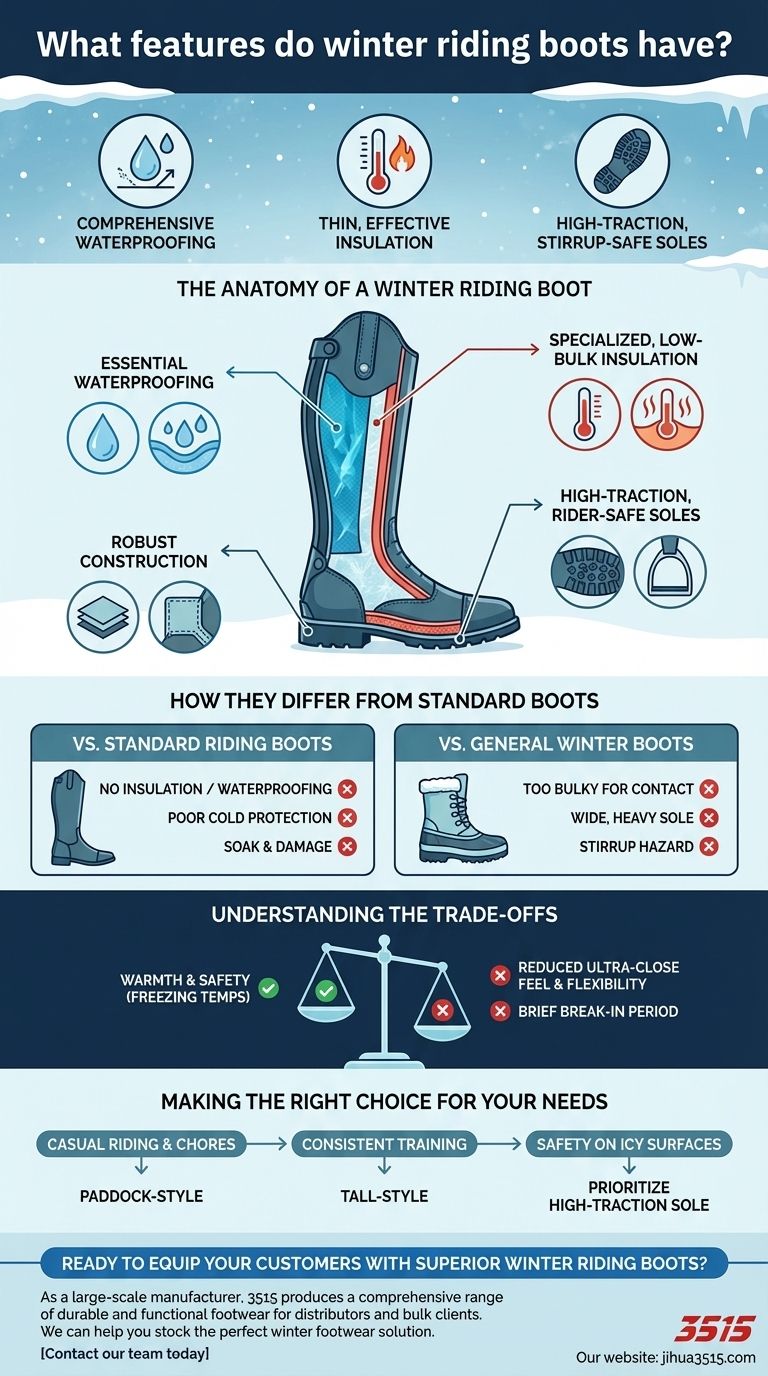
Related Products
- Premium Wholesale Waterproof Safety Boots High Performance Protection for Industrial Markets
- High Performance Fire-Retardant Waterproof Safety Boots
- Customizable Anti-Smash Safety Boots for Wholesale & Private Label Manufacturing
- Premium Grain Leather Safety Boots for Bulk Supply
- Factory-Direct Wholesale Canvas Boots with High-Traction Rubber Soles
People Also Ask
- Is there a downside to steel toe boots? Weighing Protection Against Daily Comfort
- How do safety shoes protect you? A Guide to Essential Footwear Safety Features
- What is the primary purpose of safety shoes? Your Ultimate Guide to Workplace Foot Protection
- What are some examples of footwear requirements in different work settings? Ensure Safety and Compliance
- How does routine boot maintenance benefit workplace safety? Proactive PPE Protection for Your Workforce








